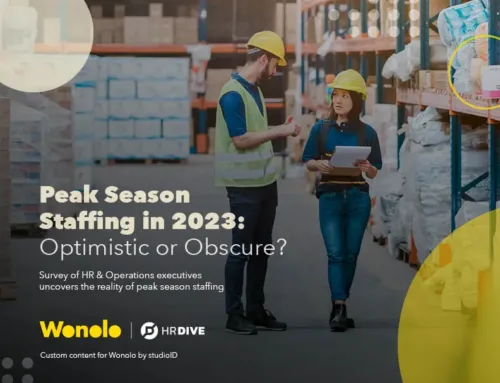Monica Plaza
The last two years have been unpredictable for businesses and workers, and although 2022 is likely to have some surprises of its own, the past foreshadows the trends that will continue into the new year.
Even though the trends may seem familiar, they still contain complexities that savvy businesses need to recognize to find and keep valued workers.
Trend # 1: The continued rise of the gig economy
For years, workers have had side hustles. They may have needed to earn additional income or gained interest in exploring another industry. But now, for many workers, the side hustle has become their primary source of income. During the COVID-19 pandemic in 2020, some sources estimate that gig workers made up about 35% of the US. workforce.
Given the closures and uncertainty experienced at the heart of the pandemic, it’s not surprising that people looked for alternative working opportunities. Many freelance jobs were a perfect match for the times. Skilled freelancers could work remotely in marketing, consulting, design, and user experience.
As more workers turn to the gig economy, the battle to attract and keep talent will likely continue for businesses in 2022 and beyond. While companies struggle to find people with the skills they need, workers now have more power in demanding and finding flexible work that suits their interest and skills.
What’s ahead for companies looking to fill jobs? There will be more gig workers. Forbes reports that by 2023, more than half of American workers could be independent laborers. Businesses will need to adjust to this new dynamic and strategically analyze how gig workers with different skill levels can help them meet their goals.
As gig work becomes the norm, companies may need to adapt. If organizations want to increase their engagement with gig workers in the future, they’ll need to determine how to balance its needs with ensuring the flexibility and independence that gig workers demand.
Companies are also planning to increase worker pay in 2022 by an average of 3.9%–the highest increase since 2008. While the higher pay could draw more workers, today’s workers are looking for more than a bump in pay — they are also looking for flexibility, work environment, and opportunities to develop their skills.
Trend # 2: The Changing Work Environment
Companies are re-opening their offices that were closed because of the COVID-19 pandemic, but not everyone wants to come back. A Gallup poll found that 45% of full-time employees worked remotely in some capacity in September 2021. Remote work has long been on employees’ wish lists, and when the pandemic began, even companies that resisted working remotely had no choice but to convert.
Many employees enjoy the flexibility of working from home, and as companies call employees back to the offices, some are saying ‘no thanks’, or at least, ‘not yet’. For companies who do bring their employees back to the office, they also face the question of: Why do it at all?
Many companies are now looking at hybrid work environments, hoping that offering employees a combination of remote and in-office work will hit the sweet spot of flexibility and collaboration.
But even if businesses are able to create ideal hybrid work environments, not all workers can operate from home. Many front line positions require the workers to be in-person. Companies must also determine how to develop an environment that provides increased flexibility, even within the confines of being on-site. It’s also vital that companies commit to creating a safe working environment for on-site workers.
What should leaders know about the new work environments? Companies can no longer do things because that’s the way they’ve always been done. Instead, they must recognize that regardless of the job, people want the flexibility to determine where and when they work—allowing them to focus on their own personal and professional priorities.
Addressing this change means looking at every practice and process in an organization to see if it makes sense. Is it good for employees and contractors? Is it beneficial to the company? Instead of deciding a new concept won’t work, consider what changes are needed to make it work.
Just as we’ve seen gig workers seek flexibility and enjoyment from their work, employees all around want more say in how and where they get their job done. Savvy employers will work with employees to re-imagine how to make this happen.
Trend # 3: Culture is recognized as the differentiator
The last two years were tough for employees, and they’ve been difficult for employers too. During this time, businesses have renewed awareness of just how critical employees are to an organization. Whereas before, employers held the power, the balance has shifted to an employee-centric focus.
More than ever, companies realize that their culture is instrumental in attracting and retaining employees. Companies also recognize that a positive culture does more than making employees happy; it also benefits the bottom and top line. Organizations with positive cultures have higher revenue growth and profitability than those without. When a company has a healthy culture, it offers its employees a better experience, which can improve retention, productivity, and customer relations.
How will culture impact organizations in 2022? Even the companies that succeeded at creating the right culture may face challenges as they shift to working remotely, or as their employees begin a hybrid schedule, or as they increase their engagement with gig workers.
Companies will need to determine what type of culture their business needs and how to embed it throughout the organization, regardless of where people work. Company leaders will need strategies to adapt to workers’ changing demands if they want to ensure that all workers passionately work towards the company’s goals. The organizations that can do that first and best will have the advantage.


![[Report] Beyond the Gig: Exploring Reliable Work Options for the Modern Workforce](https://info.wonolo.com/wp-content/uploads/2023/10/Worker-Preferences-Report-Header-Image-500x383.png)



